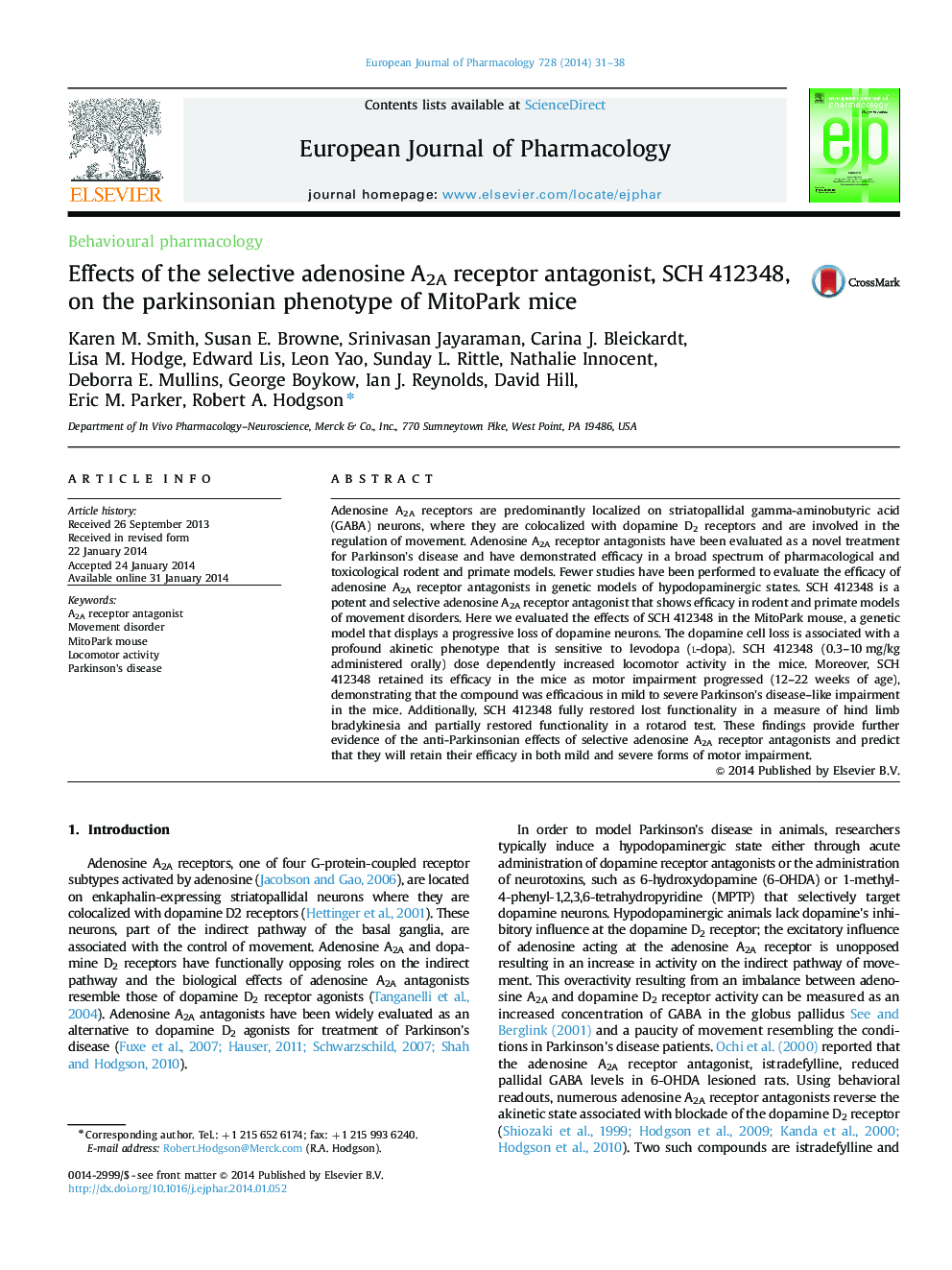| Article ID | Journal | Published Year | Pages | File Type |
|---|---|---|---|---|
| 2531845 | European Journal of Pharmacology | 2014 | 8 Pages |
Adenosine A2A receptors are predominantly localized on striatopallidal gamma-aminobutyric acid (GABA) neurons, where they are colocalized with dopamine D2 receptors and are involved in the regulation of movement. Adenosine A2A receptor antagonists have been evaluated as a novel treatment for Parkinson׳s disease and have demonstrated efficacy in a broad spectrum of pharmacological and toxicological rodent and primate models. Fewer studies have been performed to evaluate the efficacy of adenosine A2A receptor antagonists in genetic models of hypodopaminergic states. SCH 412348 is a potent and selective adenosine A2A receptor antagonist that shows efficacy in rodent and primate models of movement disorders. Here we evaluated the effects of SCH 412348 in the MitoPark mouse, a genetic model that displays a progressive loss of dopamine neurons. The dopamine cell loss is associated with a profound akinetic phenotype that is sensitive to levodopa (l-dopa). SCH 412348 (0.3–10 mg/kg administered orally) dose dependently increased locomotor activity in the mice. Moreover, SCH 412348 retained its efficacy in the mice as motor impairment progressed (12–22 weeks of age), demonstrating that the compound was efficacious in mild to severe Parkinson׳s disease–like impairment in the mice. Additionally, SCH 412348 fully restored lost functionality in a measure of hind limb bradykinesia and partially restored functionality in a rotarod test. These findings provide further evidence of the anti-Parkinsonian effects of selective adenosine A2A receptor antagonists and predict that they will retain their efficacy in both mild and severe forms of motor impairment.
